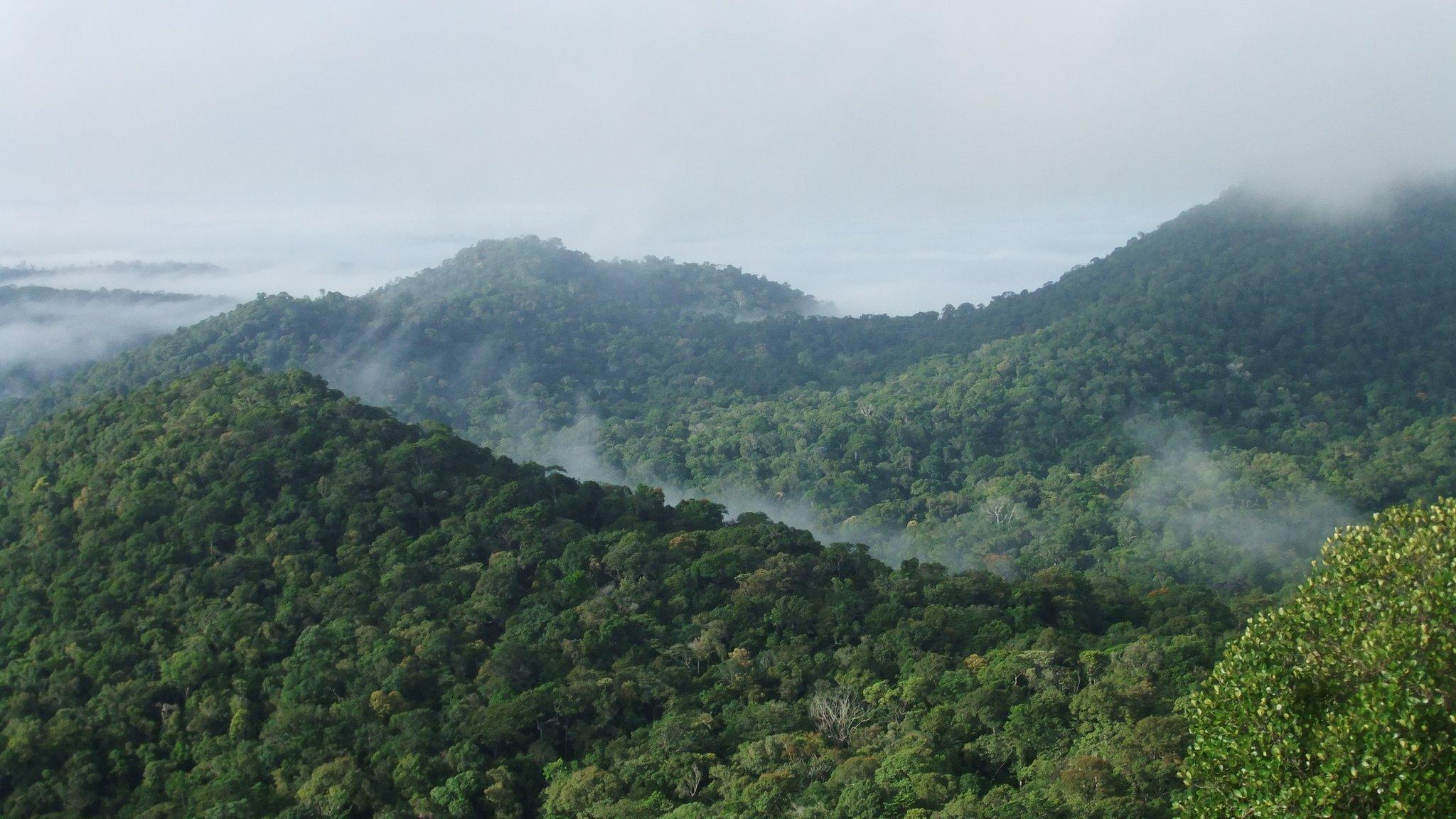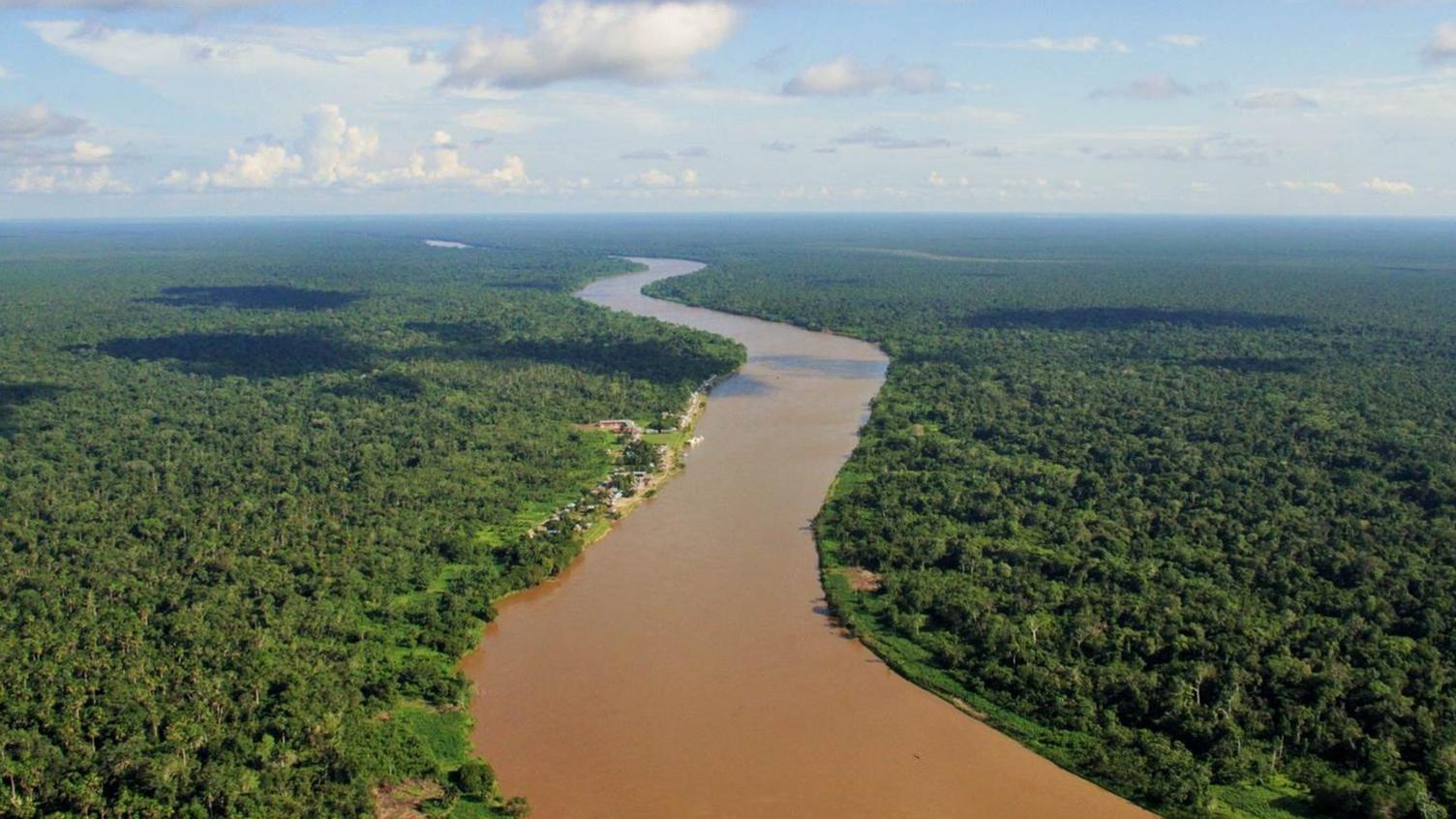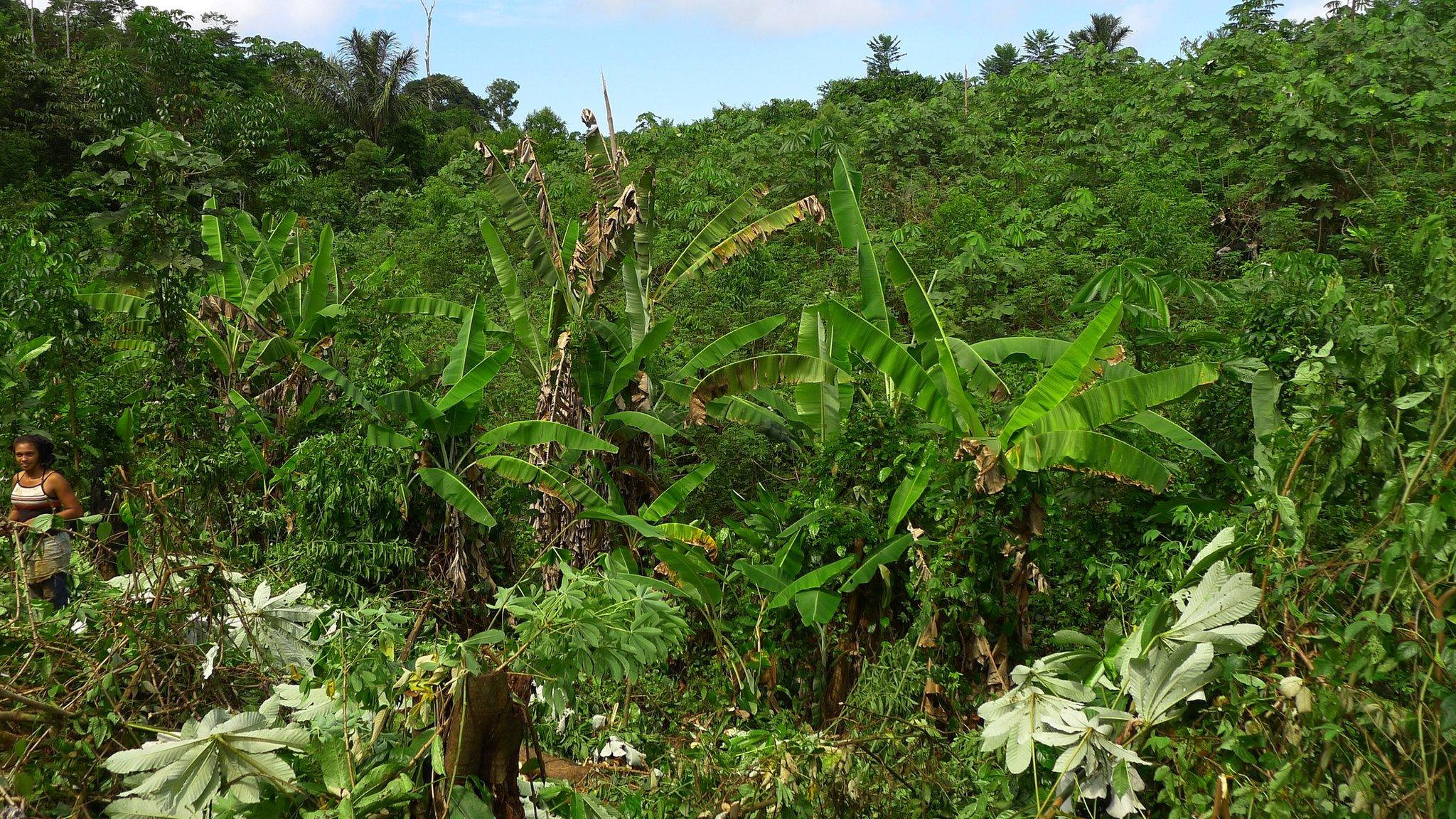Drought 'shuts down Amazon carbon sink'
- Published

The vast tropical forests of Amazonia account for almost one-fifth of the world's terrestrial vegetation carbon stock
A recent drought shut down the Amazon Basin's carbon sink by killing trees and slowing trees' growth rates, a study has shown.
The term carbon sink refers to the ability of a natural zone to absorb CO2 from the atmosphere.
In the first basin-wide study of the impacts of the 2010 drought, data showed trees' mortality rate went up while growth rates declined.
The findings have been published by the Global Biogeochemical Cycles journal, external.
The Amazon Basin is a key player in the Earth's carbon cycle, holding 17% of the terrestrial vegetation carbon stock.
An international team of scientists studied the effects of two drought events, in 2005 and 2010, that affected large swathes of forest across the region, using data from the long-running Rainfor network that gathers data from almost 100 locations across the Amazon Basin.
Co-author Ted Feldpausch from the University of Exeter, UK, said the study was the first large-scale, direct demonstration of tropical drought slowing tree growth, describing the findings as "extremely important".
Carbon neutral
He told BBC News that the droughts had effectively shut down Amazonia's function as a carbon sink.
"Our plots across the basin indicate that this forest became carbon neutral, so they were not taking up more carbon than they were losing," he explained. "This was regardless of whether the plots had experienced a drought or not.
"The second thing that we found was an impact in 2010 on the growth of trees. This did not happen in 2005. Those trees that had the most intense precipitation anomalies also had lower growth.
"Mortality was also affected. We saw mortality go up and growth go down, which - again - we did not see in 2005.
"The final key point was that we did not find some sort of compound effect between the 2010 events and previous droughts."
Dr Feldpausch said the study's results showed that the response of trees to droughts was complex and dynamic.
"It certainly does raise a new set of questions because something did change in the way that these trees responded to drought, so it raises questions about other environmental conditions that are changing across the Amazon basin, such as the temperature increasing," he suggested.
"This is one area that we need to investigate in the future; is there going to be some sort of interaction between precipitation deficits and increasing temperature?"
Ecosystem service
Fellow co-author Oliver Phillips from the University of Leeds, UK, explained that the Amazon had provided a "tremendous service, taking up hundreds of millions more tonnes of carbon every year in tree growth than it loses through tree death".
But Prof Phillips added: "Both the 2005 and 2010 droughts eliminated those net gains."
Dr Feldpausch did highlight that it was not all bad news: "We do find that these forests are fairly resilient, and we do need to keep that in mind.
"We did have this reduction in carbon uptake but then between those drought years, such as prior to 2005, we had a carbon sink.
"In 2005, it was more or less turned off but then again between 2005 and 2010, the forest again became a carbon sink rather than a carbon source, and then in 2010 it switched back to being carbon neutral.
"In terms of policy, that is an important thing to note. This shows that these forests do have the continued capacity to take up carbon even though they are affected by these drought events.
"So they do provide this great ecosystem service… but that means that the forest needs to remain standing to provide this service."
Follow Mark on Twitter., external
- Published28 April 2015

- Published15 December 2014

- Published4 February 2016

- Published18 February 2011
- Published6 January 2012
